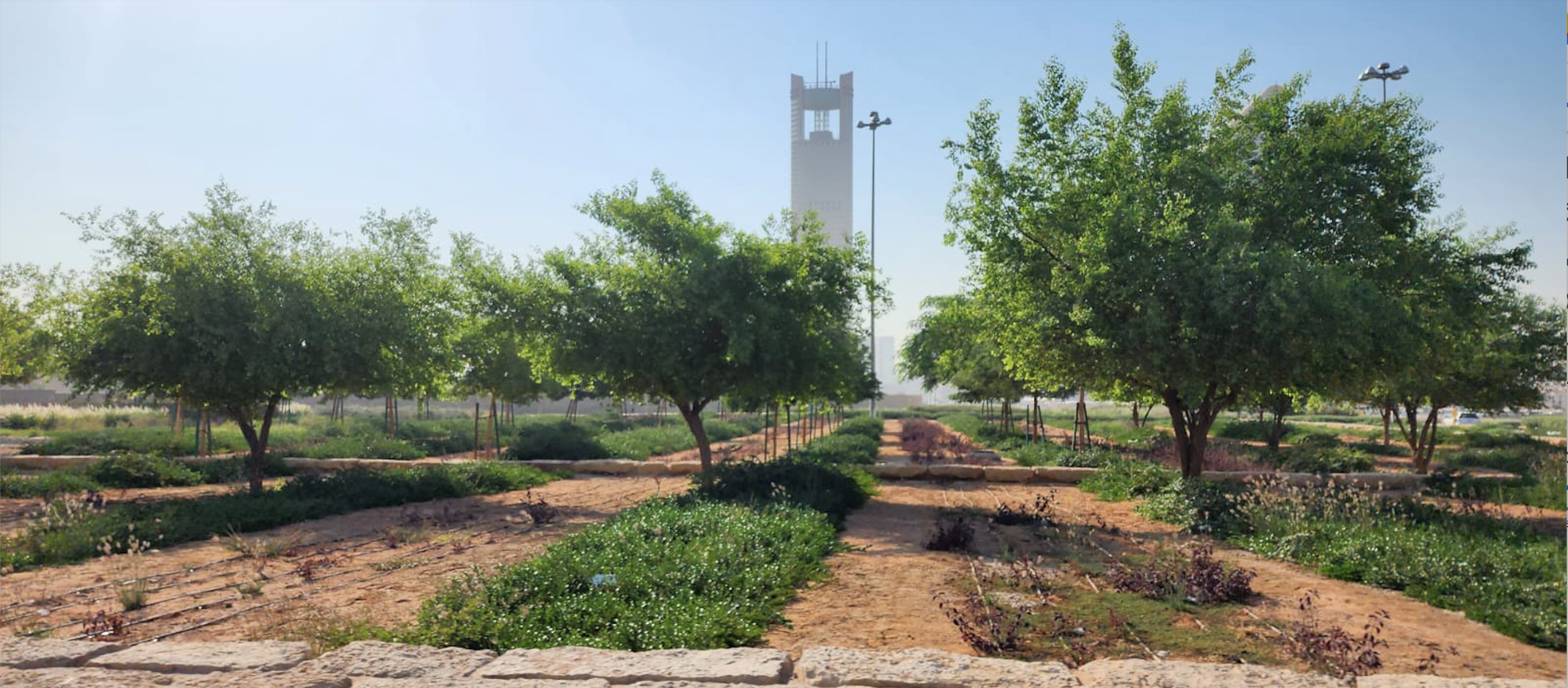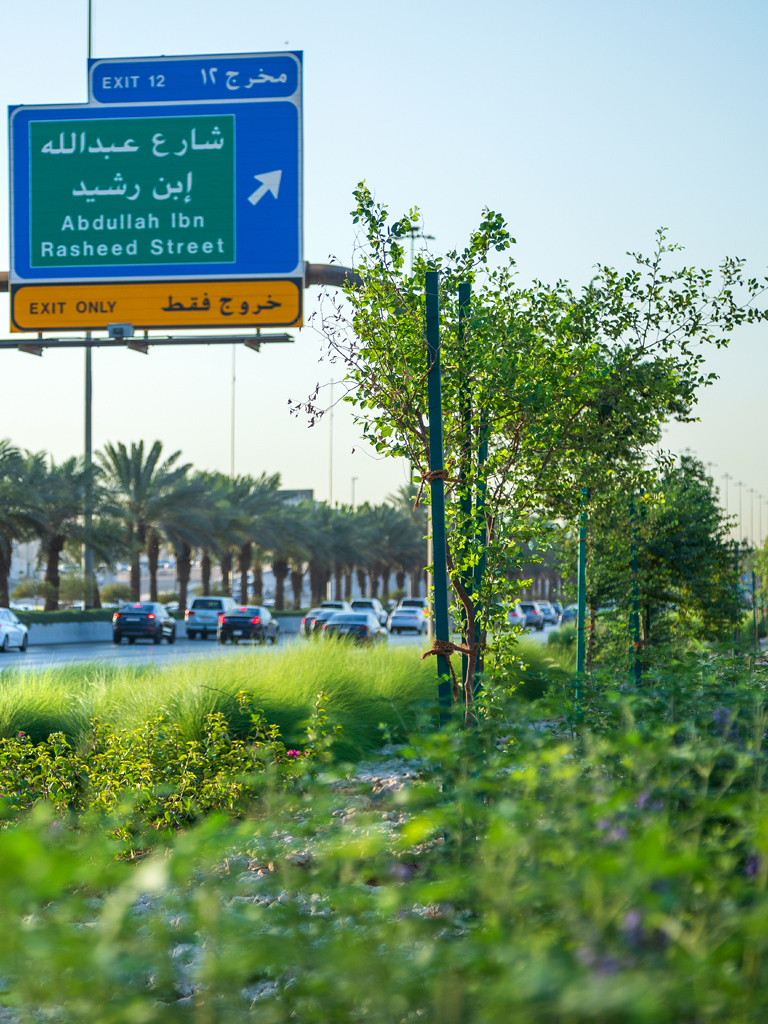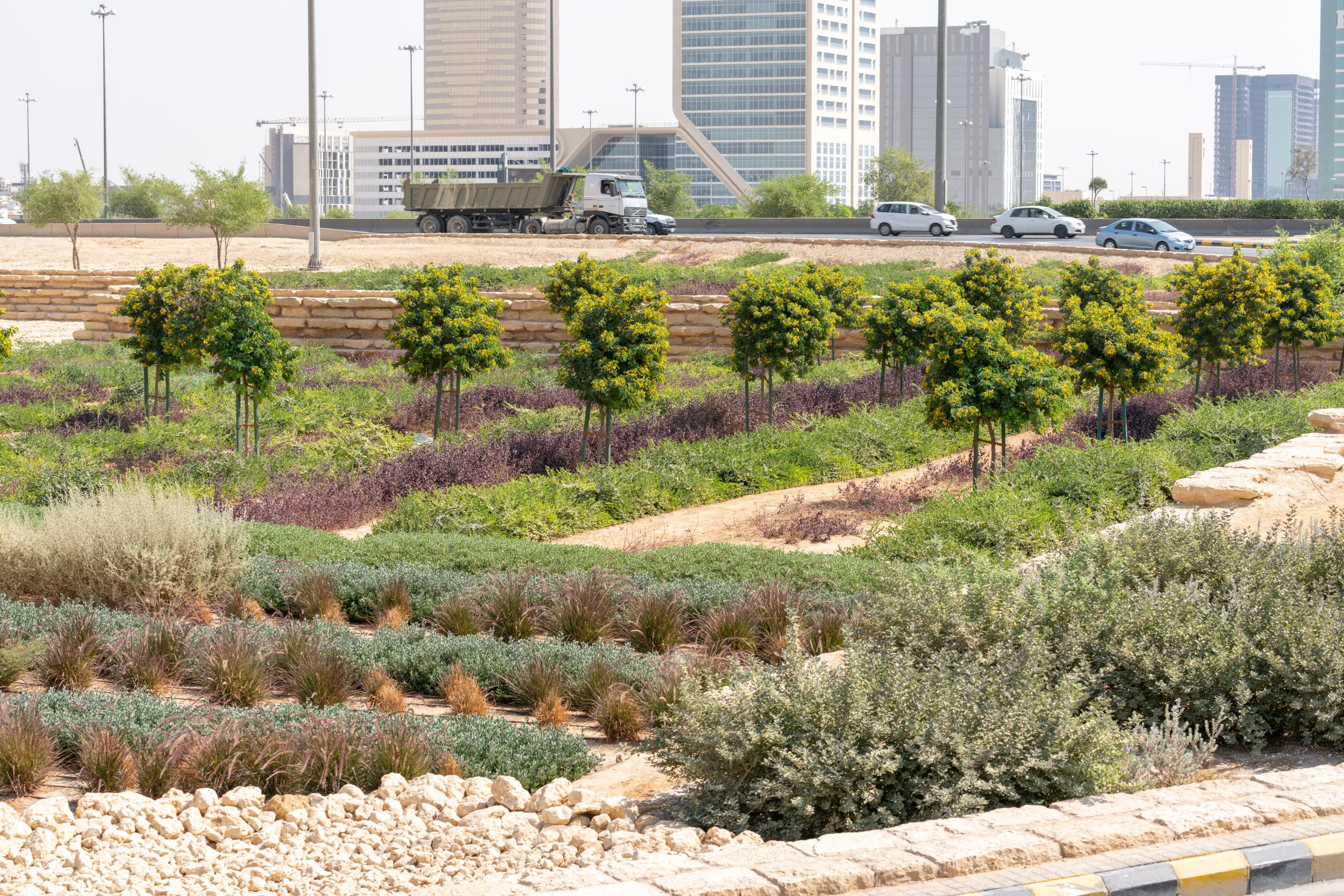HOME / PROGRAMS AND PROJECTS
Green Riyadh Program
The “Green Riyadh” program is one of the largest ambitious urban afforestation projects in the world and one of the four major Riyadh projects launched by the Custodian of the Two Holy Mosques King Salman Bin Abdulaziz, on Tuesday, Rajab 12, 1440 AH (March 19, 2019 AD) at the initiative of His Royal Highness Prince Mohammed Bin Salman Bin Abdulaziz, Crown Prince Prime Minister to contribute to achieving one of the goals of “Saudi Vision 2030” to raise the classification of Riyadh among its counterparts in the world and make it one of the best cities to live in the world.

Vision
The Green Riyadh program should contribute to raising the per capita share of green space in the city and increasing the percentage of total green spaces by intensifying afforestation in all elements of the city, while achieving the optimal use of treated water in irrigation works; which contributes to improving air quality, reducing temperatures in the city, and encouraging residents to practice a more active and vibrant lifestyle in line with the goals and directions of the Kingdom’s Vision 2030.
Program Projects
The Green Riyadh Program aims to plant more than 7.5 million trees throughout the city of Riyadh until 2030, to raise the per capita share of green space in the city of Riyadh, from 1.7 square meters to 28 square meters, equivalent to 16 times, and increase the percentage of total green spaces in the city from 1.5% to 9%, which contributes to improving the quality of life in the city of Riyadh.
The list includes 99 selected tree species that suit the city’s environment and achieve the program’s objectives within three main groups of projects:
City Afforestation Projects
These projects include afforestation of the following elements:
- 43 grand parks
- 148 km2 of valleys and their tributaries
- 1205 linear km of main roads
Neighborhood Afforestation Projects
These projects include afforestation of the following elements:
- 3,331 neighborhood parks
- 5,939 schools
- 4,500 mosques
- 387 health facilities
- 4,936 linear km of internal streets
- 1,665 government complexes
- 2,000 parking locations




Enablers and infrastructure projects
The program works on the establishment and development of plant nurseries with a production capacity exceeding 3,000,000 seedlings annually, as these plant nurseries include the following:
- Seedling production
- Seed Bank
- Breeding and caring for trees
- Training centers and laboratories
The program is also working on the construction of a 1,350 km treated water network, which will be used for irrigation by 100%, and the network capacity will reach 1,700,000 m3 per day, compared to 90,000 m3 currently.
The program also includes the development of legislation and urban controls to promote afforestation in public and private projects and stimulate community participation in afforestation initiatives.



Program Returns
- Reducing the air temperature by 1.5 to 2 ° C at the city level.
- Reducing the temperature of glare reflected from the surface of the earth between 8 to 15 degrees in intensive afforestation areas.
- Reducing carbon dioxide by 3-6%, increasing the rate of oxygen, increasing the rate of air humidity, thus improving the air quality in the city.
- Reducing energy consumption by an average of 650 GWh during the year.
- Increasing the city’s capacity to absorb rainwater and reduce the effects of flooding in the city.
- Enhancing the aesthetic aspects of the city.
- Encouraging the population to practice healthy mobility patterns.
- Preserving natural areas and increasing biodiversity within and around the city.
- Improving the quality of life indicators in the city, thus raising its classification among its counterparts in the world.
- The program provides new investment opportunities for the private sector in plant nurseries, afforestation, garden design, landscaping and irrigation work.
- The program contributes to achieving a number of goals of Saudi Vision 2030 by achieving environmental sustainability in the city, building a vibrant community with a healthy lifestyle, and enhancing the economic efficiency of the city.
- The program contributes to achieving a number of objectives of the National Transformation Program, including increasing green space, reducing water waste, improving the efficiency of flood drainage, raising the percentage of treated water use, and increasing the per capita share of green spaces and national parks.
- The program contributes to achieving a number of goals of the “Quality of Life Program” by establishing open areas for social communication and practicing various sports and increasing individuals’ walking rates.



